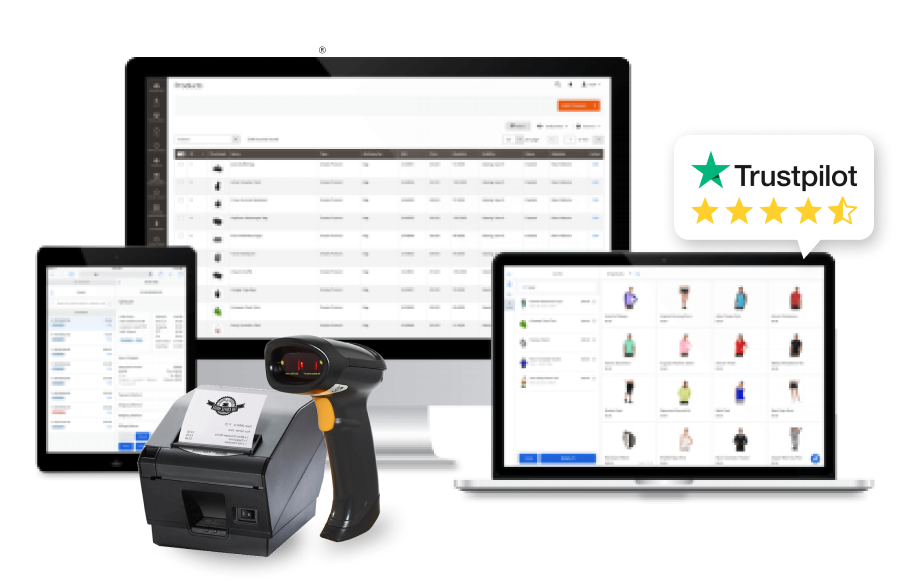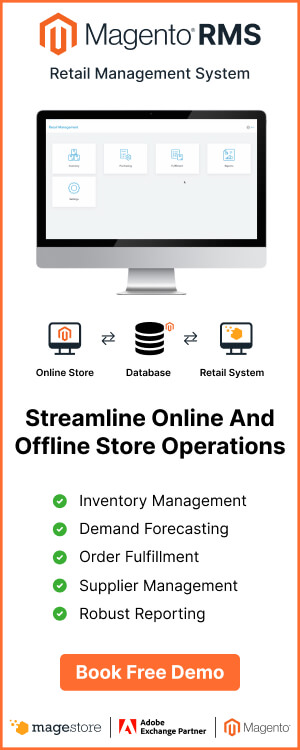The shopping experience has a significant influence on the customer buying process, and retailers surely need to care about this to win the very first impression of customers. In offline stores, it is the way retailers decorate their stores, the product display, and in-store services to help boost customer shopping experiences.
When it comes to online shopping, it’s all about your website. More specifically, it’s about showcasing your products to the customers. We have a distinct term for that called product catalog management. You may wonder what it’s precisely, how it’s essential, and how to manage it to delight customers. Let us uncover this in the following article.
Product catalog overview
What is a product catalog?
A product catalog is simply a set of information about all the products that you are ready to showcase on your website. A product catalog on a website acts as product display booths in an offline store. Depending on customer understanding or business purposes, the information in product catalogs is divided into different sub-categories varying from industries to industries.
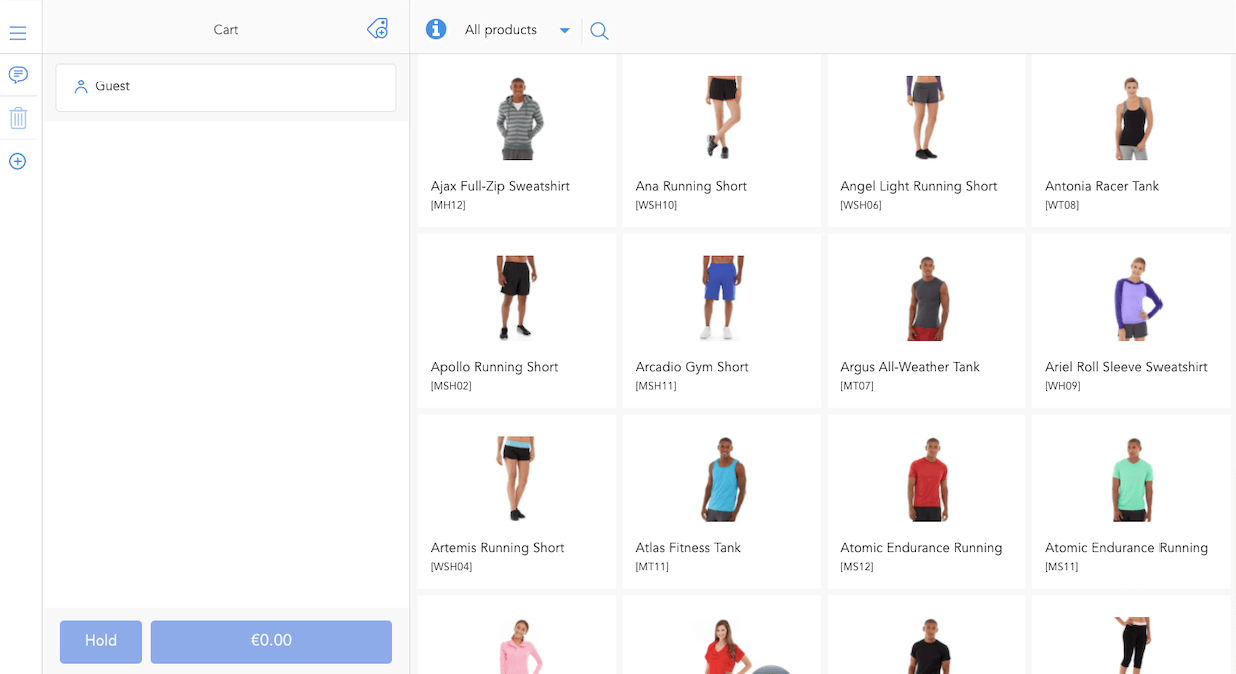
(An example of a product catalog on Magestore POS)
What does it include?
A product catalog typically includes the following information:
- Product name, title
- SKU (Stock keeping unit) (which is unique for each product used for inventory management)
- Product category/sub-category
- Dimensions (size, length, volume, height, etc.)
- Product description/short description (constituents, features, version, year of the launch, ideal conditions of usage, safety measures, etc.)
- Price
- Pictures
- Terms and conditions
Who needs a product catalog?
To better answer the question: “Why is product catalog management important”, we first should understand who needs a product catalog.
- Merchants: you are the very first one to need this information. You need it to showcase what you’re selling to customers, for inventory management, for marketing activities.
- Customers: they are the ones reading your product information the most. Before making a purchase, they will research the products carefully, consider information from various sources. If they visit your website and see that you’re providing the items they demand, they are more likely to buy from you. In this case, a concise and comprehensive product showcase on your website will help you win these customers.
- Your sales staff: They may be the second-most readers of a product catalog. Your sales staff can refer to the product catalog to communicate, consult with customers about the product benefits or other crucial information about a product.
- Your partners: You’re a wholesaler and have a lot of retailers, do you like to spend some time every day just informing or answering questions about products again and again from your retailers? It’s kind of time-consuming, isn’t it? Show them your well-organized and real-time product catalog to save time for both.
What is product catalog management? Why is it important?
What is product catalog management?
Product catalog management is now a must-have in retail businesses. The managing task refers to the strategic approach of structuring, organizing, standardizing, and publishing the product information across all online sales channels. To put it simply, it is about maintaining the product database in a well-organized and well-structured manner and keeping it up to date.

Why is it important?
Now that you’ve known what product catalog management is and who needs the product catalog. Thus, it’s now easier to understand the importance of product catalog management. A well-organized, concise product catalog on your website will help you set up a foundation for your business.
Create an Omnichannel experience
Going omnichannel is now more than just a trend. It may be one of the best ways to operate a retail business thanks to its outstanding benefits over multichannel. The primary concern of any retailer is to maintain a consistent omnichannel experience. Effective and proper product catalog management will allow you to ensure the correction and consistency of the product database.

Enhance customer service
When a customer visits your website, does it mean you’ve successfully won this customer? It’s too early to make that conclusion. You want that customer to have further engagement with you. The customer will read the product information provided on your website and compare it with other information they’ve collected from different sources.
If they can’t find the information needed or find the information confused or poorly organized, they will soon leave your website and may never come back. When you haven’t had the opportunity to talk directly with customers, let your powerful words on your website take the lead.
Develop your business
Looking at a good product catalog management, you can easily see what products you can sell fast, what your key products are. Based on that, you can add more products to your catalog, have more marketing activities to promote key products. That is how excellent product catalog management can grow your business.
Challenges of product catalog management
In order to effectively manage your product catalog, you should be aware of the following challenges. Do they sound familiar to you?

Keep product lists updated in real-time
You may need to spend hours every day updating product information because of price changes, new products coming in or out. This task can lessen your working time for other valuable tasks like marketing activities, staff training, or customer experience enhancement.
Standardize product data from suppliers
Do you often adjust or change the product information from suppliers to fit with your business tone of voice or format? Do you need to fill out the missing product information? We bet you frequently have to do these tedious things. As suppliers normally don’t sell products directly to the end-users, they don’t have to standardize the product information. Thus, the tiring task now passes on you.
Grow your product catalog
Things can change drastically compared to your plan as nothing is impossible in the retail business. You might have a perfect plan for your product catalog plus great product catalog management. Since your business grows, your product catalog also needs upgrading. In many cases, you even have to clean your current product catalog before updating a new one.
Explore solution: Most customizable & scalable POS for Magento merchants
Best practices of product catalog management

Offer relevant and quality product information
This is the first and foremost point to notice when talking about managing a product catalog. As business owners, you need to make sure you’re delivering the correct and updated information to your customers. This helps ease the product search process of customers and increase their trust in your brand.
Categorize your products properly
How you convey product information to customers is as important as what information you want to convey to them. At this point, you should pay attention to easy product navigation options and clear categories. For example, your first product catalog looked like this:
Fashion Store
- Casual clothing
- Women
- Men
- Children
- Underwear
- Women
- Men
- Children
But after you’ve observed your customer’s behaviors carefully and consulted from other stores, you decided to change the current catalog to:
Fashion Store
- Women
- Casual clothing
- Underwear
- Men
- Casual clothing
- Underwear
- Children
- Casual clothing
- Underwear
Another example maybe instead of using L to denote Large size, you change it to 38. A good product catalog structure comforts the filtering process of customers.
Provide alternative products
An effective product catalog should not only show the right products customers are looking for, but also can suggest alternatives for different products. This benefits both your customers and you.
One tip in this part is to use tags. Sometimes, customers don’t have a particular intent for a specific product, they just search for products by keywords. In this case, your search result should show them many options rather than just a few ones. When your customers have more choices and you have more chances for upselling or cross-selling.
How does Magestore POS help Magento merchants manage product catalog?
If you want to manage your product catalog, you need to have products first right? This part will shortly walk you through the common tasks involved in the product catalog management of Magento merchants. Let’s see how Magestore Magento 2 POS deals with managing product catalogs.
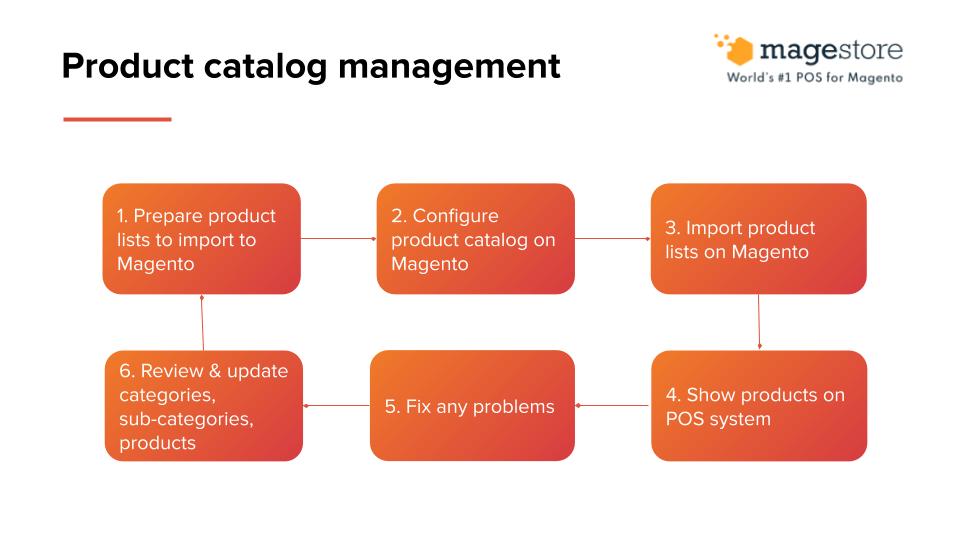
Prepare product lists to import to Magento
There are 3 ways to import products to Magento. The first way is to add each product manually on Magento. The second way is to import a CSV file to Magento (the file contains all the information needed about your products). The third way is to scan the product barcodes.
If you want to save lots of time and do importing effectively, we recommend the second way. In this case, you’ll need to prepare CSV files for all product lists.
Another key activity in this step is to outline the product catalog of your business with a diagram. Let’s divide all your products into different categories and subcategories. Depending on how you understand your customers or what your business purposes are, you can come up with different ways to show your products in the catalog. One vital point you should remember is that don’t divide all products into too many small subcategories. This can put you in trouble when you expand your product lists.
Explore solution: Track & manage items in real time for better inventory visibility
Configure product catalog on Magento
You’ve seen how your product catalog looks like with the diagram created in the first step. It’s now time for you to configure it on the Magento backend. To better work on this step, you can refer to these Best practices for product categories.
Import products to Magento
In the first step, we’ve suggested you import products to Magento using CSV files. Each product type has a different way to import. For your convenience, we’d like to share with you our series of articles on how to import each product type on Magento.
- For simple, virtual, downloadable products
- For configurable products
- For grouped products
- For bundle products
Show products on POS
You may have hundreds or thousands of products to show on POS. To set up products massively visible on POS, you can follow the following steps:
Step 1: Go to Catalog > Inventory > Products.
Step 2: Tick on the checkbox with items to be shown on POS.
Step 3: Choose Actions > Update Attributes.
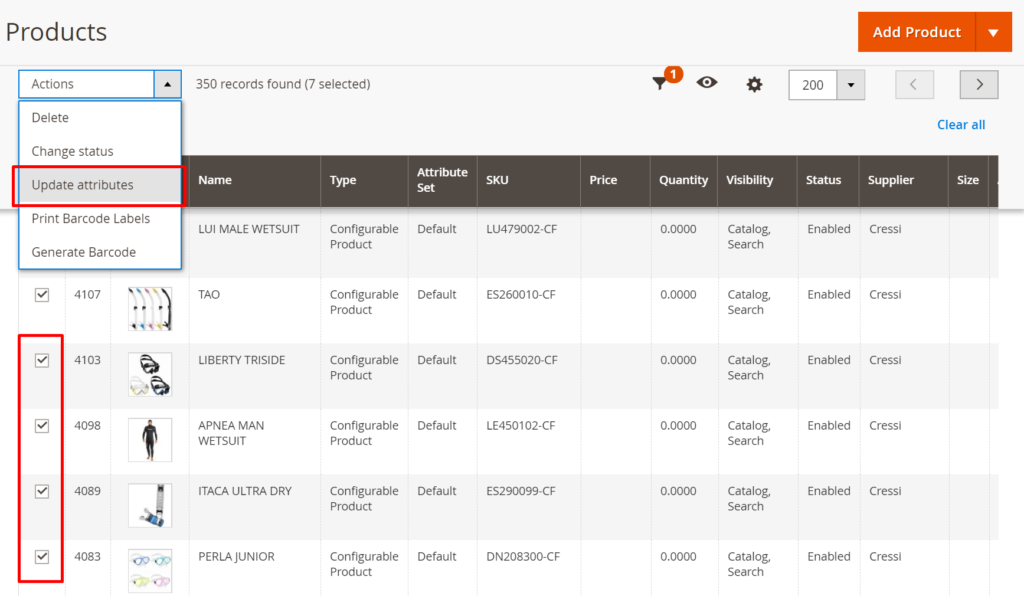
Step 4: Scroll down to Visible on POS, change to Yes, then click Save
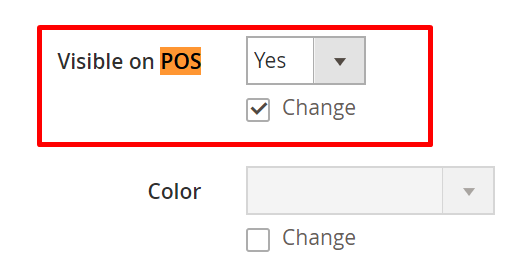
Fix any problems
Some common problems include the products can’t be shown on POS or how to sell products that haven’t been added to the POS system. How to deal with these problems? Keep on reading our related guides.
Review & update categories, sub-categories, products
As your product lists change during business operations, you’d better add a task of reviewing and updating product information on your product catalog management plan. That will keep your product catalog up-to-date to provide timely and accurate information to your customers.
In summary
A good product catalog shows how profoundly you understand your customers which is the pillar stone in successfully managing a product catalog. When you haven’t had the opportunity to talk directly with customers, let the powerful words on your website interact, and keep customers staying. For more discussion about how to design a great-fit product catalog management plan, let’s talk with our experts.

